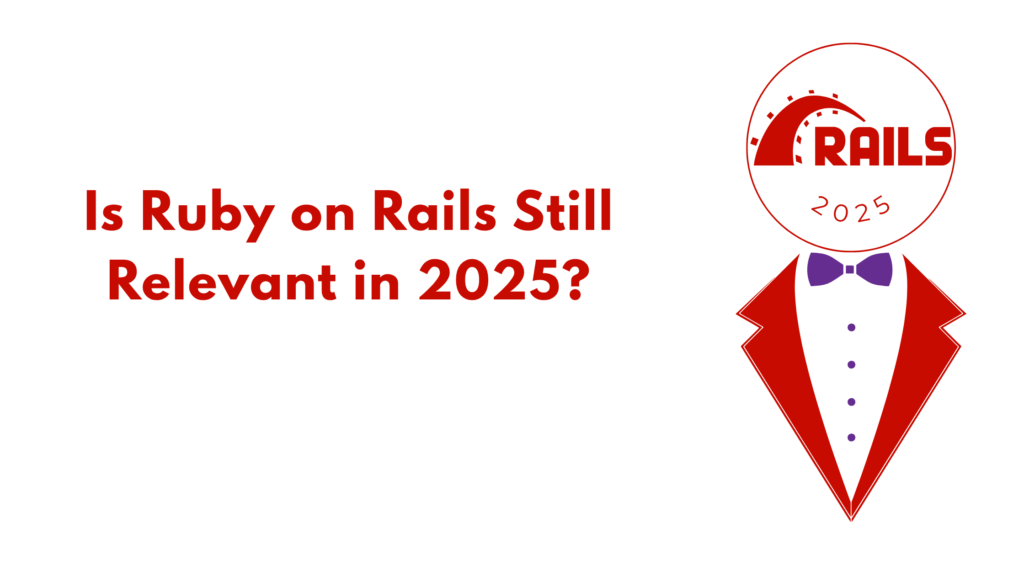
When you hear discussions about modern web development, the spotlight often falls on newer frameworks like Next.js, Laravel, or Django. In this evolving ecosystem, a common question arises: Is Ruby on Rails still relevant in 2025? Despite shifting trends, Ruby on Rails (RoR) continues to be a powerful, production-grade tool that many companies trust at scale. Let’s explore why.
What is Ruby on Rails?
Ruby on Rails is a full-stack web application framework built on the Ruby programming language. Created in 2004 by David Heinemeier Hansson (DHH), Rails popularized concepts like Convention over Configuration, Don’t Repeat Yourself (DRY), and scaffolding, which have influenced numerous frameworks across the tech industry
A Quick History and Legacy
From its inception, Rails dramatically reduced the time it took to build full-featured web applications. By 2010, it had gained widespread adoption—GitHub, Shopify, Basecamp, Airbnb, and Hulu were either built on or started with Rails. Over the years, the framework matured with major enhancements like Action Cable, ActiveJob, Hotwire (Turbo + Stimulus), and Active Storage.
Despite the rise of single-page applications (SPAs) and JavaScript-dominant stacks, Rails continued to innovate, particularly with the Hotwire approach to modern full-stack UX without relying on heavy JavaScript.
Why Ruby on Rails Still Relevant in 2025 for Startups
1. Productivity & Developer Experience
Rails favors convention, which eliminates boilerplate and promotes rapid development. For startups, internal tools, and MVPs, this translates to faster time-to-market and cleaner codebases.
2. Full-Stack Power with Modern Features
Rails today supports:
- Hotwire (Turbo + Stimulus) for real-time UIs without JS frameworks
- Action Mailbox, Action Text for rich communications
- Native support for Docker, encrypted credentials, and parallel testing
These make Rails a complete solution out of the box.
3. Rich Ecosystem and Mature Community
With over 180,000+ Ruby gems, a decade of community support, and well-documented patterns, Rails developers benefit from battle-tested libraries, tutorials, and plugins.
4. Stability for Scaling
Shopify processes billions of requests per day using a monolithic Rails architecture. GitHub still uses Rails as its backend. Rails isn’t just for small projects—it scales when engineered well.
When Rails Might Not Be the Best Fit
While Rails is powerful, it may not be ideal for:
- Real-time multiplayer apps requiring heavy WebSocket communication
- Serverless/microservice-first architectures
- Environments with teams deeply embedded in other ecosystems (e.g., Node.js, Go, Rust)
Rails prioritizes convention and monoliths, which might clash with distributed-first designs.
What the Industry Says
Ruby on Rails Job Market
Despite hype around newer frameworks, Rails remains a steady presence in job listings:
- As of mid-2025, LinkedIn and Indeed report 3,000–6,000 active Ruby on Rails jobs worldwide.
Developer Interest
Ruby on Rails maintains:
- Over 53,000 stars on GitHub
- Over 130M gem downloads annually
- A strong presence in bootcamps and enterprise software
Modern Use Cases (2025)
| Use Case | Why Rails Fits |
| SaaS Platforms | Quick scaffolding + Hotwire UX |
| Admin Panels | Built-in security, ActiveAdmin |
| Internal Tools | Fast prototyping with low overhead |
| eCommerce | Frameworks like Spree and Solidus |
| APIs | Easily integrated with React, Vue, or mobile frontends |
Final Thoughts: Ruby on Rails Still Relevant in 2025?
Yes, It’s Still Relevant
Ruby on Rails remains a powerful and pragmatic framework in 2025. While it may not grab headlines like JavaScript meta-frameworks, it delivers where it matters: productivity, maintainability, and developer happiness.
If your project values rapid development, stability, and a proven full-stack framework, Rails is still an excellent choice.
To explore more in-depth Ruby on Rails resources and development practices, visit SaasTrail.com.


